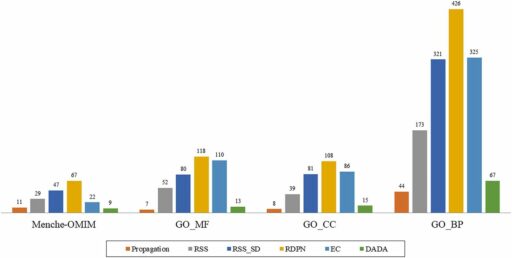Table of Contents
Data structures are the backbone of efficient software development, allowing programmers to organize, manage, and store data effectively. Essential for both simple and complex tasks, they enable easier access, efficient modifications, and robust problem-solving strategies. This article delves into the core concepts of data structures that every developer should grasp, from basic arrays and linked lists to advanced trees and graph algorithms, and underscores their practical applications in various fields of technology.
Key Takeaways
- Mastering fundamental data structures such as arrays, stacks, queues, and linked lists is crucial for efficient coding and algorithm implementation.
- Understanding the role of data structures in memory management helps in optimizing software performance and scalability.
- Choosing the appropriate data structure is key to solving specific problems effectively and can greatly influence the efficiency of an application.
- Advanced data structures like trees, graphs, and hash tables are essential for organizing complex data and enabling fast data retrieval and manipulation.
- Knowledge of algorithm efficiency, particularly Big O notation, is imperative for evaluating and improving the performance of data structures in real-world scenarios.
Fundamentals of Data Structures

Understanding Arrays, Stacks, Queues, and Linked Lists
Arrays, stacks, queues, and linked lists are fundamental data structures that serve as the building blocks for more complex structures and algorithms. Arrays provide constant-time access to elements, which is ideal for scenarios where random access is frequently required. However, they require contiguous memory allocation and are less flexible when it comes to insertions and deletions.
Stacks operate on the Last In First Out (LIFO) principle, making them perfect for tasks like undo operations in software or for managing function calls in a program’s execution. The basic operations include push() for insertion and pop() for deletion.
Queues, on the other hand, follow the First In First Out (FIFO) principle. They are essential in situations where order needs to be preserved, such as in print job management or in handling requests to a server.
Linked lists offer a dynamic structure with elements linked using pointers, allowing for efficient insertions and deletions without the need for contiguous memory. This makes them suitable for applications like playlist management where the dataset is frequently modified.
Here is a comparison of basic operations across these data structures:
| Operation | Array | Stack | Queue | Linked List |
|---|---|---|---|---|
| Access | O(1) | O(n) | O(n) | O(n) |
| Search | O(n) | O(n) | O(n) | O(n) |
| Insertion | O(n) | O(1) | O(1) | O(1) |
| Deletion | O(n) | O(1) | O(1) | O(1) |
Choosing the right data structure depends on the specific requirements of the application, such as the need for fast access, frequent modifications, or memory efficiency.
The Role of Data Structures in Memory Management
Data structures are akin to the organizational systems that manage the allocation and utilization of memory in programming. Efficient memory management is a cornerstone of high-performing applications, and data structures are the tools that make this possible. By optimizing how data is stored and accessed, developers can reduce memory overhead and enhance the scalability of their software.
- Arrays and hash tables are examples of data structures that provide efficient memory usage through optimized algorithms for data retrieval and updates.
- Log-structured data structures log modifications, allowing for memory-efficient reconstruction of data at a later time, though they may introduce complexity and slower updates.
Data structures not only organize and store data but also influence how memory is used. Choosing the right data structure can lead to significant improvements in program efficiency and resource management.
Choosing the Right Data Structure for Your Application
Selecting the right data structure is crucial for the efficiency and scalability of your application. The choice should be driven by the specific needs of your data and operations. For instance, if you require fast access to elements by index, an array might be the best choice. Conversely, if you need to handle data with frequent insertions and deletions, a linked list could be more appropriate.
- Arrays are ideal for indexed access and fixed-size collections.
- Linked Lists excel in scenarios with dynamic data and frequent insertions/deletions.
- Stacks are perfect for Last-In-First-Out (LIFO) operations.
- Queues serve First-In-First-Out (FIFO) processes well.
Scalability and maintainability are key considerations when choosing data structures. A well-chosen data structure can significantly enhance the performance and manageability of your software as it grows.
Efficiency is another critical factor. Data structures like hash tables offer optimized algorithms for quick retrieval and updates, which can lead to faster execution times. Always consider the trade-offs between the complexity of implementation and the runtime performance benefits.
Complex Data Structures Explained

Trees and Binary Search Trees: Organizing Hierarchical Data
Trees are fundamental non-linear data structures that form a hierarchy starting from a single root node, branching out to various levels of nodes, and ending with leaves. Binary Search Trees (BSTs), a specialized form of trees, allow for efficient searching, insertion, and deletion operations due to their ordered nature.
- Traversal: In-order, Pre-order, Post-order
- Insertion: Adding nodes while maintaining order
- Deletion: Removing nodes and reorganizing the tree
- Search: Quickly locating a node
Binary Search Tree Insertion involves finding the correct location for a new node, which may cause a cascading change in the tree’s structure. This ensures that the BST properties are maintained after each operation.
Understanding the standard operations on trees is crucial for their implementation and application in various domains. These operations enable the manipulation of hierarchical data in a way that can be both time-efficient and organized.
Graphs: Modeling Relationships Between Data Points
Graphs are pivotal in representing complex relationships in data, allowing for the visualization of networks where nodes (or vertices) symbolize entities and edges depict the connections between them. Graphs are integral to numerous applications, from social networks to logistics, enabling the analysis of relationships and the optimization of paths.
- Depth-First Search (DFS) and Breadth-First Search (BFS) are key graph traversal algorithms.
- Graphs are essential in route optimization, evident in services like Google Maps.
- Understanding graphs aids in solving problems related to network analysis and recommendation systems.
Graphs not only represent connections but also facilitate the discovery of the most efficient routes, highlighting the shortest or least costly paths between points. This characteristic is crucial for applications that require route optimization to save time and resources.
The table below summarizes the common operations performed on graphs and their typical use cases:
| Operation | Use Case |
|---|---|
| Traversal | Exploring all nodes and edges |
| Insertion | Adding new nodes or edges |
| Deletion | Removing nodes or edges |
| Search | Finding specific nodes or paths |
Hash Tables: Efficient Data Retrieval through Hashing
Hash tables are a cornerstone of efficient data retrieval, functioning much like a well-organized filing cabinet with labeled folders. By using a hash function, a key is transformed into a unique index, allowing for rapid access to the corresponding value. This process is akin to finding a specific document quickly without sifting through piles of unrelated papers.
The efficiency of hash tables lies in their ability to provide constant-time complexity, on average, for search, insert, and delete operations. This makes them an invaluable tool in situations where performance is critical. Below is a comparison of average case time complexities for common operations across different data structures:
| Operation | Array | Linked List | Hash Table |
|---|---|---|---|
| Search | O(n) | O(n) | O(1) |
| Insert | O(1) | O(1) | O(1) |
| Delete | O(n) | O(1) | O(1) |
Hash tables are not without their challenges, such as handling collisions where multiple keys hash to the same index. However, with proper collision resolution strategies, they remain one of the most effective ways to manage data for quick retrieval.
Understanding when and how to implement hash tables can significantly improve the performance of a program. They are particularly useful in applications where rapid data access is paramount, such as in databases, web development, and various data-related categories like SEO and data science.
Algorithm Efficiency and Data Structures

Big O Notation: Analyzing Performance
Understanding the efficiency of algorithms is paramount in software development. Big O notation provides a high-level understanding of algorithm performance, categorizing them by how their run time or space requirements grow as the input size increases. For instance, an algorithm with linear time complexity (O(n)) will take proportionally longer as the input grows, whereas one with constant time complexity (O(1)) remains unaffected by input size.
When optimizing code for performance, it’s essential to consider both time and space complexity. A well-optimized algorithm can handle larger datasets efficiently, which is particularly important in applications dealing with Big Data or real-time processing. Here’s a brief overview of common time complexities:
- O(1): Constant time
- O(log n): Logarithmic time
- O(n): Linear time
- O(n log n): Linearithmic time
- O(n^2): Quadratic time
Mastery of Big O notation is not just academic; it has practical implications in selecting the right data structures and writing efficient code. By understanding these concepts, developers can avoid performance bottlenecks and build scalable systems.
Sorting Algorithms: From Bubble Sort to Quick Sort
Sorting algorithms are fundamental tools in computer science, used to order elements in a list or array. Efficiency varies greatly among different sorting algorithms, with some being more suitable for large datasets, while others are better for nearly sorted data or small collections.
- Bubble Sort: A simple comparison-based algorithm that repeatedly steps through the list, compares adjacent elements, and swaps them if they are in the wrong order. Best for small datasets.
- Selection Sort: Improves on Bubble Sort by reducing the number of swaps. It selects the smallest (or largest) element from the unsorted section and moves it to the beginning (or end).
- Insertion Sort: Builds the final sorted array one item at a time. It is much less efficient on large lists than more advanced algorithms like Quick Sort.
- Merge Sort: A divide and conquer algorithm that divides the original data into smaller sets, sorts those, and then merges them back together.
- Quick Sort: An efficient sorting algorithm that picks an element as a pivot and partitions the array around the pivot. It generally performs better than Merge Sort and is widely used in practice.
When choosing a sorting algorithm, consider not only the average-case complexity but also the worst-case scenario and the nature of the input data. Quick Sort, for example, has a worst-case complexity of O(n^2), but with a good pivot selection strategy, it can perform as well as O(n log n) on average.
Searching Algorithms: Linear Search vs Binary Search
When it comes to retrieving data efficiently, the choice of search algorithm can greatly impact performance. Linear search is a straightforward approach, scanning each element in the list until the desired item is found or the end is reached. In contrast, binary search significantly reduces the search time by repeatedly dividing the sorted list and narrowing down the potential locations of the sought item. However, binary search can only be applied to sorted data structures.
The efficiency of these algorithms can be quantified using Big O notation. Here’s a quick comparison:
| Algorithm | Best Case | Average Case | Worst Case |
|---|---|---|---|
| Linear Search | O(1) | O(n) | O(n) |
| Binary Search | O(1) | O(log n) | O(log n) |
Choosing the right search algorithm is crucial for optimizing performance and resource utilization in applications.
Understanding when to use each algorithm is key. Linear search is simple and effective for small or unsorted datasets, while binary search is ideal for larger, sorted datasets. Mastery of these algorithms enhances a developer’s toolkit, enabling them to tackle a variety of problems with greater efficiency.
Practical Applications of Data Structures

Data Structures in Web Development
Web development is a domain where data structures play a pivotal role in creating dynamic and efficient applications. From managing user sessions to handling data on the client-side, developers rely on various data structures to optimize performance and enhance user experience.
- Arrays and objects are commonly used to handle form data and configuration settings.
- Stacks and queues facilitate undo/redo operations and task scheduling.
- Linked lists and trees can manage component states and DOM manipulations in frameworks like React.
Embracing the right data structures can significantly streamline the development process and improve the scalability of web applications.
Understanding the types, classifications, and applications of data structures is crucial for developers to make informed decisions. Selecting an appropriate data structure can lead to more maintainable and efficient code, ultimately contributing to the success of a web application.
Leveraging Data Structures in Machine Learning
In the realm of machine learning, data structures are not just a convenience, they are a necessity for managing complexity and ensuring efficiency. Organizing data efficiently is paramount, as the choice of data structure directly impacts the processing speed and memory usage. For instance, arrays and dictionaries are fundamental for storing features and labels, while trees are often used in decision-making algorithms.
- Arrays and dictionaries facilitate quick access and manipulation of data.
- Trees enable hierarchical data modeling, crucial for algorithms like decision trees.
Optimizing code for performance is another critical aspect. A deep understanding of the time and space complexity of algorithms allows developers to write code that not only executes but scales with the increasing demands of machine learning applications. Scalability is a cornerstone of machine learning systems, and the right data structures provide the foundation for building robust and maintainable software.
By mastering data structures, developers can navigate complex algorithms with greater ease and precision, leading to more effective machine learning solutions.
Real-world Scenarios: Choosing Data Structures Wisely
In the realm of software development, choosing the right data structure is a critical decision that can significantly impact the performance and scalability of an application. For instance, when dealing with real-time applications, the selection of data structures that can handle dynamic changes efficiently is paramount.
- Arrays and linked lists are often favored for their simplicity and direct access to elements.
- Stacks and queues, being linear data structures, are ideal for scenarios requiring orderly processing.
The key to successful implementation lies in understanding the trade-offs and memory requirements of each data structure. A static data structure with fixed memory size may not be suitable for applications that demand flexibility and growth.
Ultimately, the goal is to match the data structure to the application’s needs, ensuring that memory management is optimized and that the system remains robust even as it scales.
Advanced Data Structure Concepts

Understanding Red-Black Trees and AVL Trees
Red-Black Trees and AVL Trees are advanced data structures that are critical for maintaining sorted data and allowing for efficient insertion, deletion, and retrieval operations. Both structures are self-balancing binary search trees, but they differ in their balancing strategies and performance characteristics.
AVL trees are more rigidly balanced compared to Red-Black Trees, which means they provide faster lookups as they ensure the tree’s height is logarithmic to the number of nodes. However, this comes at the cost of slower insertion and deletion operations due to the frequent need for rotations to maintain balance.
In contrast, Red-Black Trees provide a good compromise between balancing and performance. They allow for faster insertion and deletion at the expense of slightly slower searches compared to AVL trees. The choice between the two often depends on the application’s requirements for balancing search speed against update speed.
Both AVL and Red-Black Trees are essential for applications where data is constantly being inserted and deleted, and there is a need for quick retrieval. Understanding the nuances of each can significantly impact the efficiency of an application.
Here is a comparison of their operations:
| Operation | AVL Tree | Red-Black Tree |
|---|---|---|
| Insertion | Slower | Faster |
| Deletion | Slower | Faster |
| Search | Faster | Slightly Slower |
Developers must consider these differences when choosing the appropriate data structure for their specific use case.
Navigating Complexities with Graph Algorithms
Graph algorithms are pivotal in addressing complex problems within various domains, from social networks to mapping software. Understanding graph traversal algorithms like Depth-First Search (DFS) and Breadth-First Search (BFS) is essential for tasks such as searching for specific points or identifying outliers. These algorithms allow for efficient exploration and analysis of graph data structures, which consist of vertices (or nodes) and edges, representing the connections between them.
Graphs are not only theoretical constructs but also underpin real-world applications. For instance, services like Google Maps and Uber leverage graph algorithms to calculate the shortest paths and optimize routes, enhancing user experience and profitability. Mastering graph algorithms can lead to the development of solutions that are exponentially faster than other approaches, providing a significant advantage in performance-critical applications.
When approaching graph-related problems, it’s crucial to choose the right algorithm for the task at hand. This decision can greatly impact the efficiency and scalability of the solution.
As developers delve deeper into data structures and algorithms, they encounter advanced concepts such as trees and graphs. These structures add layers of complexity but also offer new possibilities for solving intricate problems. Choosing the appropriate data structure and algorithm is a skill that developers refine over time, leading to more effective and optimized code.
Spatial Data Structures: Quad Trees and KD Trees
Spatial data structures are essential for managing multidimensional data, such as geographical information systems (GIS) and computer graphics. Quad trees partition two-dimensional space into four quadrants recursively, making them highly efficient for spatial queries. Each node in a quad tree represents a specific region of space and can have up to four children, corresponding to the four subdivisions of that region.
KD Trees, or k-dimensional trees, are another form of spatial data structure that generalize the concept of binary search trees to higher dimensions. They are particularly useful for organizing points in a k-dimensional space and support efficient search operations. The structure of a KD Tree alternates between different dimensions at each level, which allows it to adapt to the specific distribution of data.
Both quad trees and KD trees are powerful tools for spatial indexing and search operations. Their ability to decompose space into manageable units makes them indispensable for applications requiring fast access to spatial data.
When choosing between quad trees and KD trees, consider the following factors:
- The dimensionality of the data
- The nature of the spatial queries
- The distribution of the data points
Understanding these factors will guide you in selecting the most appropriate spatial data structure for your needs.
Conclusion
In conclusion, the journey through essential data structure concepts is a fundamental step for every developer aiming to excel in the field of programming. From the basic arrays and linked lists to the more complex trees and graphs, understanding these structures is crucial for organizing and manipulating data efficiently. Mastering these concepts not only improves the performance of software but also enhances problem-solving skills and algorithmic thinking. As we’ve explored, data structures are not just theoretical constructs but practical tools that, when applied correctly, can lead to more efficient and effective code. Whether you’re a beginner or an experienced coder, continually learning and applying these data structure principles will undoubtedly contribute to your growth and success as a software engineer.
Frequently Asked Questions
What are the basic data structures every developer should know?
Every developer should have a good understanding of fundamental data structures such as arrays, linked lists, stacks, queues, trees, graphs, and hash tables. Mastering these structures is essential for organizing and managing data efficiently in software development.
Why are data structures important in programming?
Data structures are crucial because they provide a way to organize and store data in a computer’s memory. They enable efficient data retrieval, manipulation, and maintenance, which is vital for writing performant and scalable software.
How do data structures improve program efficiency?
Data structures improve program efficiency by allowing developers to manage data in a way that optimizes processing speed and memory usage. Efficient data structures reduce the time and resources required for data operations, leading to faster and more efficient programs.
What is Big O notation and why is it important?
Big O notation is a mathematical representation used to describe the efficiency of algorithms, particularly their time complexity and space complexity. It is important because it helps developers understand the performance implications of their code and choose the most efficient algorithm for a given task.
How do data structures facilitate memory management?
Data structures facilitate memory management by providing organized ways to store data that make efficient use of memory. For example, linked lists allow for dynamic memory allocation, while arrays can help manage memory with fixed-size elements.
When should a developer choose one data structure over another?
A developer should choose a data structure based on the requirements of the application, such as the type of data, the operations needed, and the frequency of these operations. Factors like time complexity for insertion, deletion, and access, as well as space complexity, should be considered.





